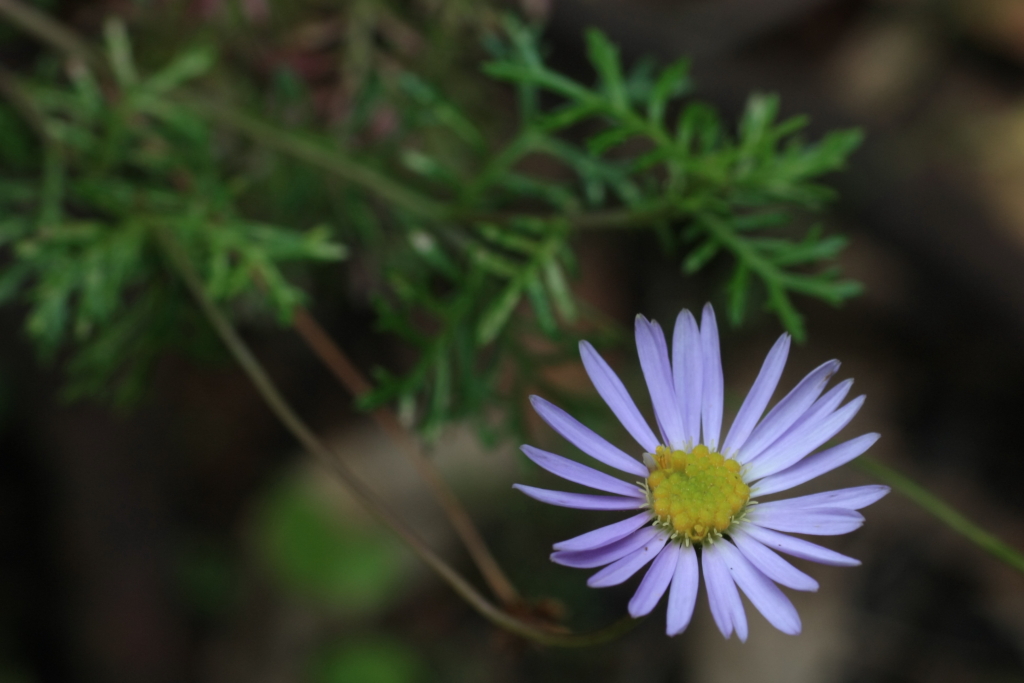Brachyscome multifida
DC. Cut-leaf DaisySprawling to bushy perennial to c. 40 cm high. Leaves cauline, c. ovate to obovate in outline, 1.5–4 cm long, 4–30 mm wide, glabrous or with scattered glandular hairs; primary lobes entire or divided; secondary lobes (if present) linear or obtriangular to oblanceolate, mucronate. Bracts c. 19–24, c. 1-seriate, equal, obovate or elliptic, 2.5–4 mm long, 0.7–1.5 mm wide, often strongly veined, mostly herbaceous but with narrow scarious margins and apex, the apex obtuse, margin usually with glandular hairs; ligules 8–12 mm long, mauve or white. Cypselas obovate, laterally compressed, 3–3.5 mm long, 2.1–2.5 mm wide, dark brown to black; lateral faces prominently tuberculate and hairy; margins entire, smooth or variably tuberculate; pappus c. 0.1 mm long. Flowers mostly Sep.–Feb.
MuM, Wim, VVP, VRiv, MuF, GipP, OtP, WaP, Gold, CVU, GGr, DunT, EGL, EGU, HSF, HNF, OtR, VAlp. Common, mainly in eucalypt woodland and forests and often in shallow, rocky soils, rather rare in grassland communities.
Smith-White et al. (1970) noted that the species, as defined by Davis (1948), is polymorphic in habit, leaf form and flower colour, and is chromosomally variable, and the recognition of 2 varieties by Davis does not accommodate the observed variation. Accordingly, a broad concept is adopted here and all Victorian material is merely referred to B. multifida pending further revision. Most Victorian specimens are specifically distinct from B. multifida s. str., varying not just in leaf morphology but also in chromosome number, and following the system of Davis (1948), would be referable to B. multifida var. dilatata. Some northern Victorian collections, particularly from the Swan Hill district, are possibly representative of B. multifida s. str.
Various entities are commonly cultivated, including the cultivars 'Amethyst', 'Breakoday', 'Bright Eyes', 'Evan', 'Alba', 'Minima', 'Roulette' and 'White Surprise' (Salkin et al. 1995).
Short, P.S. (1999). Brachyscome. In: Walsh, N.G.; Entwisle, T.J., Flora of Victoria Vol. 4, Cornaceae to Asteraceae, pp. 835–859. Inkata Press, Melbourne.
 Spinning
Spinning
